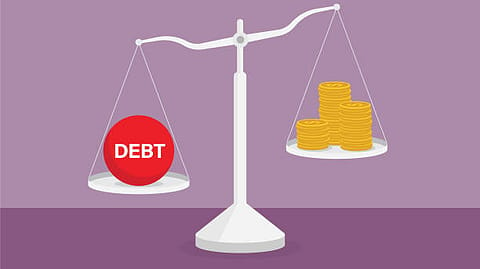Global public debt hits high of $97 trillion in 2023; developing nations struggle: UN
The report highlights soaring interest payments are outpacing the growth of critical public spending such spending on education and health combined.

Global public debt soared to an unprecedented $97 trillion ($97,000 billion) in 2023, the United Nations’ report revealed on Tuesday. Developing countries account for about one-third of this staggering sum, severely limiting their capacity to fund essential public services such as healthcare, education, and climate initiatives.
The report titled "A world of debt," highlights a troubling trend: soaring interest payments are outpacing the growth of critical public spending such spending on education and health combined. Meanwhile, repaying debt has become more costly, and this is hitting developing countries disproportionately.
The United Nations Conference on Trade and Development (UNCTAD) noted that the global debt load increased by $5.6 trillion ($5,600 billion) from the previous year. The report calls for transformative changes to the financial architecture, advocating for a future where both people and the planet can thrive without the crippling weight of debt.
“The report revealed that 3.3 billion individuals reside in nations where interest payments exceed spending on education and health combined,” the report states.
In 2023, developing nations paid $847 billion in net interest, a 26% increase from 2021. They borrowed internationally at rates two to four times higher than the U.S. and six to 12 times higher than Germany.
As the crisis escalates, the urgency to limit global warming to 1.5°C grows ever more pressing. However, developing countries are currently spending a larger share of their GDP on interest payments (2.4%) than on climate initiatives (2.1%). This debt burden is severely hindering their ability to address climate change effectively, the UN report states.
The swift increase in interest costs is straining budgets in developing countries. Currently, half of these nations allocate at least 8% of their government revenues to debt servicing, a figure that has doubled over the past decade.
Recommended Stories
"In 2023, a historic 54 developing nations, with almost half in Africa, dedicated a minimum of 10% of government funds to debt interest payments,” it adds.
Alarmingly, one in three countries in the developing world now spends more on debt interest than on key human development areas.
In a stark illustration of this growing burden, public debt in developing countries reached $29 trillion ($29,000 billion) in 2023, marking a significant rise from 16% of the global total in 2010 to nearly 30% today.
The report for 2023 revealed that the United States led globally with over $33 trillion ($33,000 billion) in public debt, followed by China with nearly $15 trillion ($15,000 billion) and Japan with $10.6 trillion ($10,632 billion).
(INR CR)